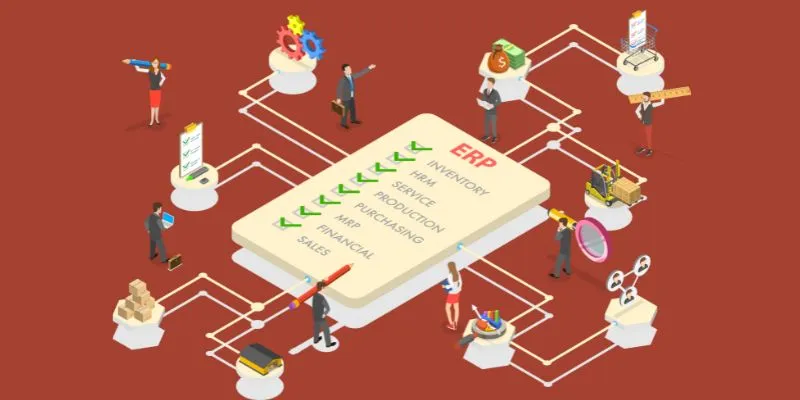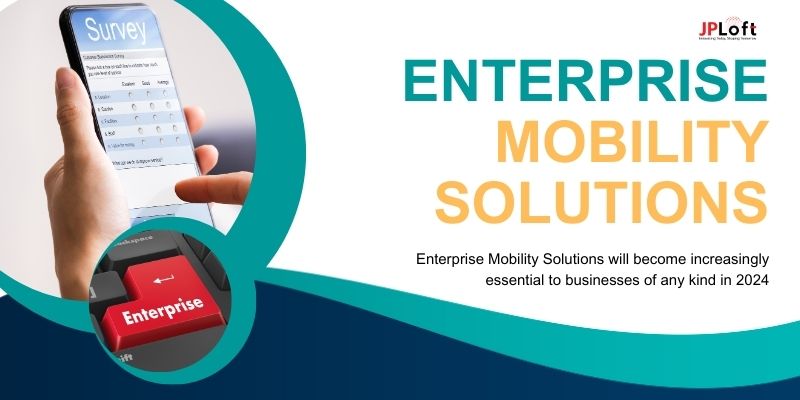Due to technological advancements and changes over the past few years, industries should hire software development companies to boost efficiency, productivity, and outcomes. Enterprise software development and regular software development are common ways to get an advantage from the latest capabilities and features to meet the specific needs of their customers. However, both terms are often confusing but play a distinct role. Enterprise-level software is generally developed with the company in mind, while normal software development is based on user requirements. Just look at this piece of blog to let you know the significant difference between these two types of software and find out how enterprise-level development can be the ideal choice for enterprises or businesses.
Read About: Guide to Enterprise Product Development
What is Enterprise Software Development?
Enterprise software development keeps focusing on an organization's needs rather than an individual user's needs. The software is typically designed to serve users from various areas of an organization. It allows different types of users to perform daily tasks. It provides a specific set of views and permissions. The software was designed specifically for users with various roles.
Customizing software for your company lets you fulfill your business's specific requirements and enhance the efficiency of your daily routine tasks. Every change implemented to the software contributes to the undertaking's overall goals, aiding in achieving the company's bigger objectives. The most common use cases are ERP and CRM tools, BI tools, project management software, and marketing automation applications.
How Does Regular Software Development Work?
Unlike enterprise software development designed to meet the requirements of a whole department or company, regular software development addresses the requirements of one end-user or group of people with similar characteristics or interests. This type of software is typically generic, sold directly to the end-users, and installed onto their own devices as an application.
While users can offer feedback and suggestions to improve, they don't get to influence the development process. The final decision on what features should be removed or added lies entirely with developers. These include applications for entertainment, media, educational software, communication tools, and office productivity tools
Enterprise Software Development Vs Regular Software Development

Regular and enterprise software development both have their advantages, which differ from one another in many ways. Let's have a look at the major differences between both of them:-
Performance
In contrast to standard computer programming, where a product or program is expected only to be used by individuals, enterprise software development must be able to work seamlessly on its own and in conjunction with other systems within the company. A variety of people utilize the software on various devices at the same time. It requires the software development company to continuously assess the situation and forecast what the future holds for the company, then make changes and standardize processes to achieve the highest quality outcomes. Because the software needs to function efficiently across all the areas in which it has to operate.
Security
Security breaches of every nature can have profound consequences. In the case of enterprise software development, the effects could be catastrophic for the company. Losing personal information due to misuse or compromised networks could ruin the entire company. Thus, leading software development company should prioritize security early and go throughout the whole software development lifecycle.
Storage
Regular software is designed to meet individual requirements. They don't require large amounts of storage. Developers can use basic databases on premises for storage, but this is not true for enterprise software. Enterprise software systems tend to be massive and complex and handle business-critical data that requires massive, safe storage. Manually procuring the necessary equipment and setting up and maintaining high-performance, highly-available servers can be time-consuming. This is the reason why businesses prefer to choose cloud storage companies. Cloud storage does not only aid in adjusting to fluctuations in demand. Still, it can also help reduce development costs at the minimum, as organizations only have to pay for what they use.
Scalability
As opposed to standard software, which cannot be expected to provide unstoppable scalability, enterprise software developers must ensure the software's scalability. No matter what it is, the magnitude of the company the software must increase in size as the business expands and provide the same functionality and accessibility shortly. This is why it is crucial that the architecture for development can accommodate rapid growth without causing a drop in performance.
Cost
Enterprises that rely on custom software development companies expect immediate results from their investment. So, when developing software for enterprises, developers must ensure that initial expenditure and regular maintenance costs are minimized and that the software functions as designed and can meet users' needs.
Why Should Opt For custom enterprise software instead of third-party standard enterprise tools?
With the wide range of industries, taking similar businesses is challenging. Each has distinct procedures that have been in place and running for years. That's why businesses often need help keeping up with changing times. Here are some benefits to remember:
Access to the overall business:
Enterprise software lets you know how your entire enterprise is operating in real time. It's okay to take a report generated by the software, create a spreadsheet with that information, and put together a slideshow to convey the business's efficiency. The main aim of enterprise software development is to support the entire company. Therefore, it can provide business intelligence and actionable information from data that comes from many sources: manufacturing, sales, marketing, and HR, among others.
Reduce costs and standardize processes
Paying a custom software development company is initially cost-effective but will benefit your company over time. It will also make it easier to standardize how you conduct business across your organization and boost the effectiveness and reliability of processes.
Scalable
When creating custom enterprise software development, you'll be set to expand. No matter how big your business is today or in the near future, it will function the way you want. However, the software will then expand with your organization.
Competitive advantage is one of the major reasons for investing in outsourcing software development companies, as it provides a competitive edge in the market scenarios. It analyzes your current situation and predicts your future direction. Simplifying and standardizing processes gives you the tools to provide the highest-quality customer service.
Also Read: Enterprise Mobility Solutions Guide
8 Tips For A Successful Enterprise Software Development
We surveyed our most experienced team members for their advice on how to develop enterprise-level software. What they have shared.
Make use of DevOps/DevSecOps Techniques
DevOps is a collection of procedures used to promote rapid, more efficient development and faster publication of applications. DevSecOps is an improvement of DevOps that integrates security into all stages of the development process. Particular DevOps methods include:
-
Continuous development
-
Continuous testing
-
Continuous delivery
Set up teams with autonomy
Create small, autonomous teams responsible for particular modules or components in your program. These teams must be accountable to their modules and able to design, develop, test, and then deploy their software.
They are accountable for their respective modules. This way of working increases productivity and decreases time-to-market.
Implement an enterprise-wide software-specific process
Use a specific methodology to develop software for enterprises, such as SAFe. SAFe is a short form for Scaled Agile Framework that was specifically designed to help implement agile practices in software development at the enterprise scale.
Make use of an Infrastructure as code (IaC) method
An IaC method lets you manage your software infrastructure in a very short time. It also gives you an environment for programming similar to the environment in which the software is running during production. This helps to avoid common errors and integration issues.
Be sure to follow architectural standards
A software program's design determines a project's success or failure. It is best to mix different architectural designs instead of trying to design a distinctive design. This can help reduce time and simplify things when developing enterprise software.
Be sure to have a great development experience
You must have a proactive and holistic environment for a project as large as enterprise-level software development. Ensure that the team is focused on implementing solutions, not just addressing problems directly connected to these issues.
Establish deployment ecosystems as early as possible
All deployment systems should be in place from the beginning instead of waiting for the launch day. Spend time getting the entire development process running efficiently early, saving you much time and effort.
A quote on deployment ecosystems by Julian Alessandro, Co-Founder and Director of Finance at NaNLABS.
Utilize the most effective technical practices
It may seem obvious, but it is rarely thought of. If you follow the most efficient technical practices, it will improve not just the performance of your platform but also the team's and business's flexibility. The best practices for technical excellence include:
-
Test-driven development
-
Automated testing
-
Continuous integration
-
Refactoring
What Are the Challenges of Enterprise Software Development
In the years we've been creating corporate software, our team has faced many problems (so it's unnecessary).
RBAC or Role Based Access Control (RBAC) mechanisms
Enterprise software usually uses an RBAC mechanism that allows for different role-specific permissions regarding what each user can and cannot perform. This is a tremendous amount of knowledge in business, and it takes time to establish who holds the roles and which authorizations. Make sure that this information is properly documented.
An abundance of APIs
Enterprise-level software is usually coupled to a wide range of APIs external to the system that do the same thing but differently. Developers must:
-
Create their code so that it can be reused as much as possible while being easy to maintain.
-
Set up monitoring systems that inform you of any integration that is not working.
-
Maintain logs to track traceability and diagnostics of errors.
Complex business logic
Enterprise software is designed to address massive enterprise-level problems. Sometimes, solutions require multiple steps, with various levels of complexity in the process. Measurably plan the development to account for this complexity ahead of time.
The process of ramp-up
Speeding up happens when a developer becomes part of an ongoing project. Enterprise-level software is packed with structures; getting to speed could take a long time. If you're expanding your development team, hire a software development company and provide them with the essential information regarding the project you can.
Conclusion
The standard software is widely available on the market nowadays, causing many to consider why they should put in the pain and hassle of creating custom enterprise software rather than using the existing software. With the wide range of industries operating in different locations, using various models, and serving different customers, it isn't easy to find two similar businesses. Each business has its own distinct processes and requirements to keep up with modern times, and they are required to choose the software that makes the most sense for their business.
In this case, enterprise software can help organizations streamline processes, boost the efficiency and productivity of their employees, and gain insight into the business overall while continuously optimizing risk and cost. In the same way, businesses that want to give their users the tools and capabilities needed to perform their tasks require regular software.
It is important to remember that no one method of development is more effective than another; the method you select depends on your specific business needs and will assist you in achieving your goals while also driving growth.













Share this blog